Learning how to calm a crying baby can feel like a draining, never-ending endeavour for a new parent. Sometimes there’s an easy fix: feeding, a burp, a nappy change… Other times it might feel like you’ve done everything in your power, but the baby just keeps on crying. If you can’t identify a reason for it, your baby might just be feeling overwhelmed, tired or upset. So, how to calm a crying baby in this situation?
Offer calm, gentle and sensitive care
Above all, young babies need their parents to soothe them and help them feel safe. An overwhelmed baby is unlikely to go to sleep – it’s intrinsically tied to their survival needs. To be able to go to sleep, they have to feel secure enough to relax and not be vigilant.
The more you can offer calm, gentle and sensitive care when your baby is feeling overwhelmed, the better. It gives your baby more opportunities to learn that they don't need to feel overwhelmed by their emotions. And, they learn to trust that you are there for them.
Examples of calm care to help soothe your baby:
- Cuddles and skin contact
- Rocking
- Speaking with a quiet voice
- Feeding
- Humming
- Shushing
- Playing white noise
- Riding the pram or sling
White noise
Babies also benefit from hearing sounds such as white noise. Throughout gestation, they become accustomed to the filtered noise they can hear in utero from about 20 weeks old. The mother’s heartbeat, digestive system and the whooshing of blood… these sounds are imprinted to babies’ brains.
Therefore, similar sounds can be useful as a background tool to help your baby relax. White noise, especially when embedded with a heartbeat, can help babies calm down.
Tips for safe use of white noise
If you choose to use white noise, make sure you do it safely. Follow these tips for the safe use of white noise:
- Devices playing white noise should be placed at least 2 metres away from the baby.
- Keep the volume low, about 50 decibels or less – as a guide, this is the level of a quiet conversation at home.
- Only use white noise for a short time, up to an hour is the recommendation.
Keep calm and carry on
All this said, crying is something babies do to express themselves until a caregiver responds to their needs. To a baby, everything in this world is new, so it’s only natural for them to feel overwhelmed. Keep calm and sooner or later your baby will calm down too.
Finally, remember this phase won’t last forever. As your baby grows and becomes more comfortable with their environment, the crying will ease off, too. And remember, it’s ok to reach out for help if you feel like you’re reaching your own limits. Our range of antenatal education and online antenatal classes are a great way to build your confidence and knowledge.
Our Products
-
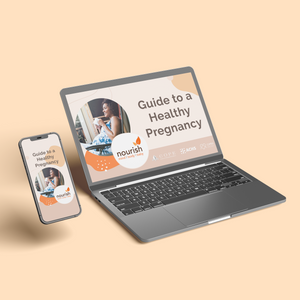
01. Guide to a Healthy Pregnancy
$55 -
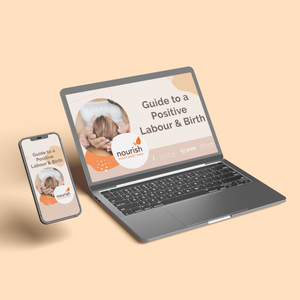
02. Positive Birthing Course
$55 -
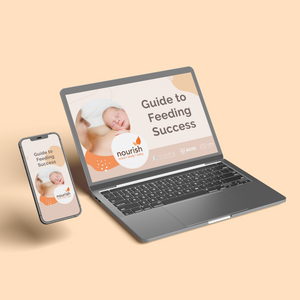
03. Infant Feeding Guide
$55 -
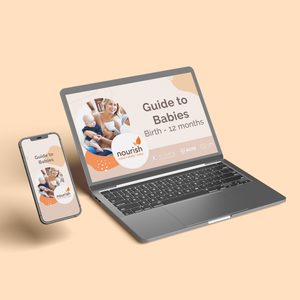
04. Baby Sleep Guide - First 12 Months
$55 -
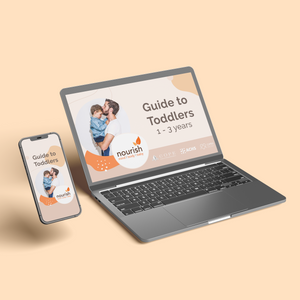
05. Toddler Parenting Course 1 - 3 Years
$55
-
 When to Start Antenatal Classes?
When to Start Antenatal Classes?
Becoming a parent is an incredible milestone, but it comes with a host of changes that can be daunting, especially for first time parents. Antenatal classes are all about offering expectant parents the education they need to make informed decisions, look after their bodies and care for their newborn babies. While you probably already have a long list of things you need to accomplish during your pregnancy, it’s a good idea to make time to attend antenatal classes.
-
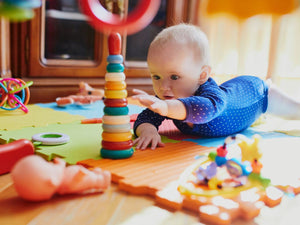 Development Milestones 4-8 Months
Development Milestones 4-8 Months
As they reach the middle of their first year, you'll start to see bigger leaps in their growth and ability!
In this article, we’re going to discuss your baby’s developmental milestones between 4-8 months, and what you can expect along the way.





 When to Start Antenatal Classes?
When to Start Antenatal Classes?
 Development Milestones 4-8 Months
Development Milestones 4-8 Months








